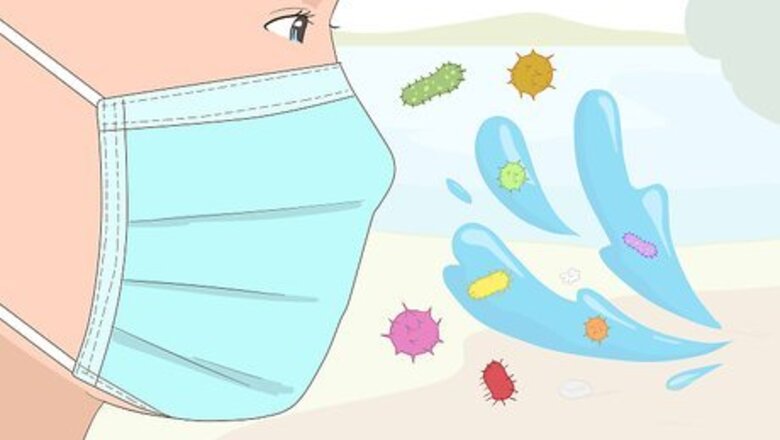
views
X
Research source
During a bad disease outbreak, health departments may also recommend that members of the public wear surgical masks to protect themselves. These masks are generally designed to completely cover both your mouth and nose.[2]
X
Trustworthy Source
San Francisco Department of Health
San Francisco's Department of Health website of Disease Control and Prevention
Go to source
[3]
X
Research source
Understanding Medical Masks
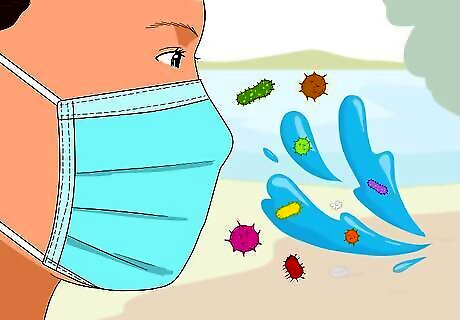
Understand what a medical mask protects you from. Medical or surgical masks are intended to cover both your mouth and nose. They are designed with material that can block large-particle droplets, splashes, sprays and splatter — all of which may contain viruses or bacteria that may be harmful to you. Note: Small-sized particles, however, may still be able to penetrate a medical mask. And, because the medical mask isn’t sealed against your skin, particles are also able to penetrate those openings.
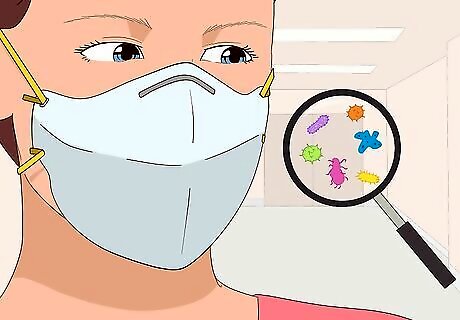
Know the difference between a medical mask and an N95 respirator. An N95 respirator is a device used by health practitioners to block 95% of very small particles. Unlike medical masks, N95 respirators fit more securely on your face and against your skin, and are able to filter airborne particles. While an N95 respirator can block 95% of very small particles — very small being considered 0.3 microns — there is still a 5% chance harmful particles can penetrate the respirator. N95 respirators are not designed for use by children or by people who have facial hair. Some N95 masks come with an exhalation valve that is designed to reduce condensation build-up inside the mask and allow the wearer to breathe easier. These masks, however, should not be used in a situation where a sterile field is required as the exhalation valve allows unfiltered (and possibly contaminated) air to leave the mask. In general, each type of N95 mask should come with detailed instructions from the manufacturer explaining how to put on and take off the mask. In order to ensure proper protection for both you and your patients, these instructions — above all others — must be followed. The Occupational Safety & Health Administration (OSHA) also requires that users are trained how to fit and use N95 respirators.
Putting on a Mask
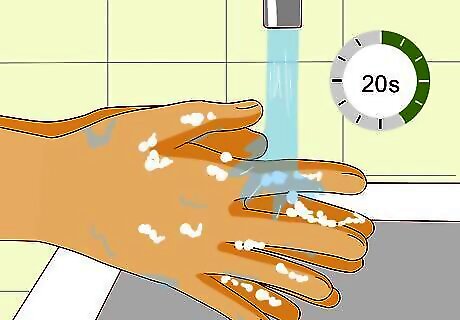
Clean your hands. Before touching a clean medical mask, wash your hands thoroughly with both soap and water.Tip: Before you throw away your paper towel, use it to open/close a door after you’ve washed your hands. Once you’ve applied soap to your wet hands, you should rub your hands together to wash them for at least 20 seconds before rinsing them off. Always use a clean paper towel to dry your hands, and then place that paper towel into a trash bin.
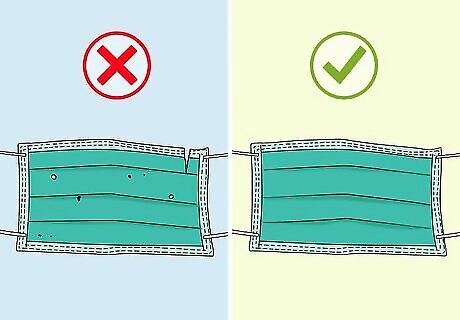
Check the medical mask for defects. Once you’ve taken a new (unused) medical mask from the box, check it to ensure it doesn’t contain any defects, holes or tears in the material. If the mask has defects, holes or tears, throw it away and select another new (unused) mask from the box.
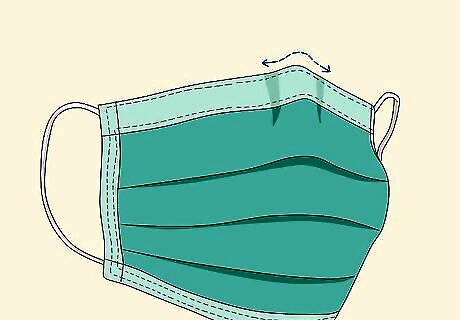
Orient the top of the mask properly. In order for the mask to fit as close to your skin as possible, the top portion of the mask will have a bendable, but stiff, edge that can be moulded around your nose. Ensure this bendable side is facing upwards before applying the mask to your face.
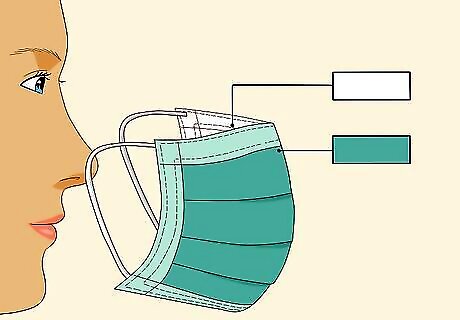
Ensure the proper side of the mask faces outwards. The inside of most medical masks are white in colour, while the outside has a colour of some sort. Before applying the mask to your face, make sure the white side of the mask is facing towards your face.

Place the mask on your face. There are many types of medical masks available, each with different methods of attaching the mask to your head. Ear Loops — Some masks have 2 ear loops on either side of the mask. These loops are normally made of an elastic material so they can be stretched. Pick up this type of mask by the loops, put 1 loop around one ear and then put the other loop around your other ear. Ties or Straps — Some masks comes with pieces of fabric that are tied around the back of your head. Most masks with ties come with upper and lower ties or straps. Pick up the mask by the upper ties, place the ties around the back of your head and attach them together with a bow. Bands — Some masks come with 2 elastic bands that are placed over and around the back of your head (as opposed to around your ears). Hold the mask in front of your face, pull the top band over the top of your head and place it around the crown of your head. Then pull the bottom band over the top of your head and place it at the base of your skull.
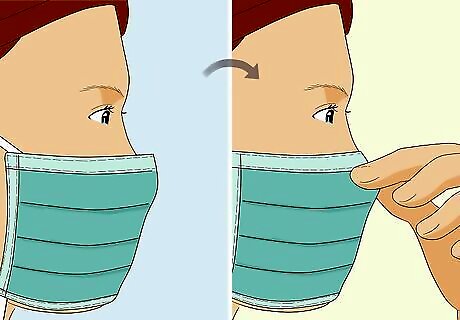
Adjust the nose piece. Now that the medical mask is in place on your head and face, use your index finger and thumb to pinch the bendable portion of the top edge of the mask around the bridge of your nose.
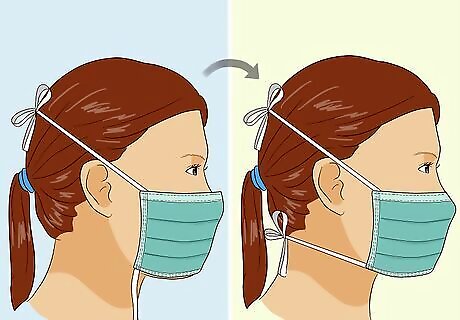
Tie the lower band of the mask if needed. If you’re using a mask with bands that tie on the top and bottom, you can now tie the bottom band around the base of your skull. Because adjusting the bendable nose piece can impact the fit of the mask, it is best to wait until after the nose piece is in place before tying the bottom straps. If you’ve already tied the bottom straps, you may need to re-tie them more tightly to get a snug fit.
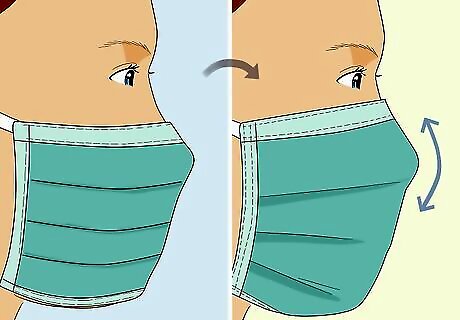
Fit the mask to your face and under your chin. Once the mask is completely secured, adjust it to ensure it covers your face and mouth, and so the bottom edge is under your chin. EXPERT TIP World Health Organization World Health Organization Global Public Health Agency The World Health Organization (WHO) is a specialized agency of the United Nations responsible for international public health. Founded in 1948, the World Health Organization monitors public health risks, promotes health and well-being, and coordinates international public health cooperation and emergency response. The WHO is currently leading and coordinating the global effort supporting countries to prevent, detect, and respond to the COVID-19 pandemic. World Health Organization World Health Organization Global Public Health Agency Expert Warning: Masks are effective only when used in combination with frequent hand-cleaning with alcohol-based hand rub or soap and water.
Taking Off a Mask
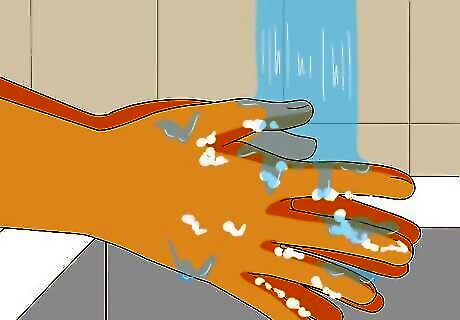
Clean your hands. Depending on what you were doing with your hands before you remove your mask, you may need to wash your hands. Or you may need to remove medical gloves, wash your hands, then remove the mask.
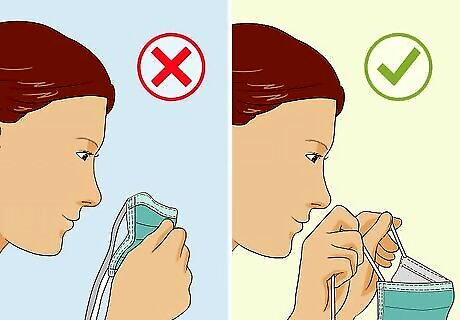
Remove the mask carefully. In general, remove the mask by only touching the edges, straps, loops, ties or bands. Do not touch the front portion of the mask which may be contaminated. Ear Loops — Use your hands to hold the ear loops and remove them from around each ear. Ties/Straps — Use your hands to untie the bottom straps first, then untie the top straps. Remove the mask while holding onto the top ties. Bands — Use your hands to bring the bottom elastic band up and over your head, then use your hands to do the same with the top elastic band. Remove the mask from your face while holding the top elastic band.
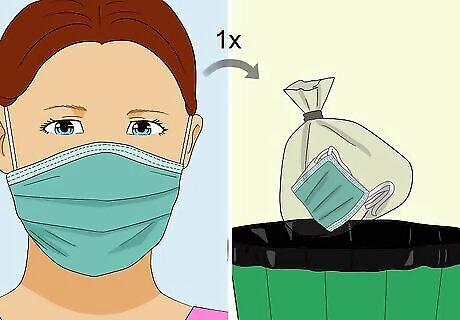
Dispose of your mask safely. Medical masks are designed to only be used once. Therefore when you take the mask off, place it in the trash immediately. In medical settings there is most likely a garbage bin specifically for biohazardous items like used masks and gloves. In a non-medical setting where the mask could be contaminated, place the mask by itself inside a plastic bag. Tie the plastic bag closed and then throw the plastic bag in the garbage bin.
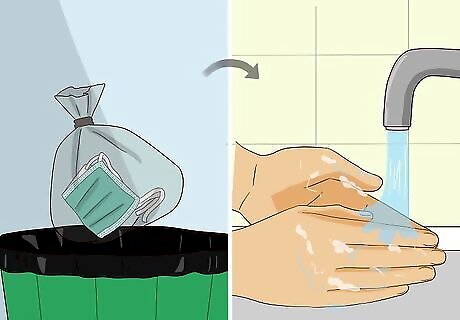
Wash your hands again. Once you’ve disposed of the mask safely, wash your hands once more to ensure they’re clean and didn’t get contaminated by touching the dirty mask.



















Comments
0 comment